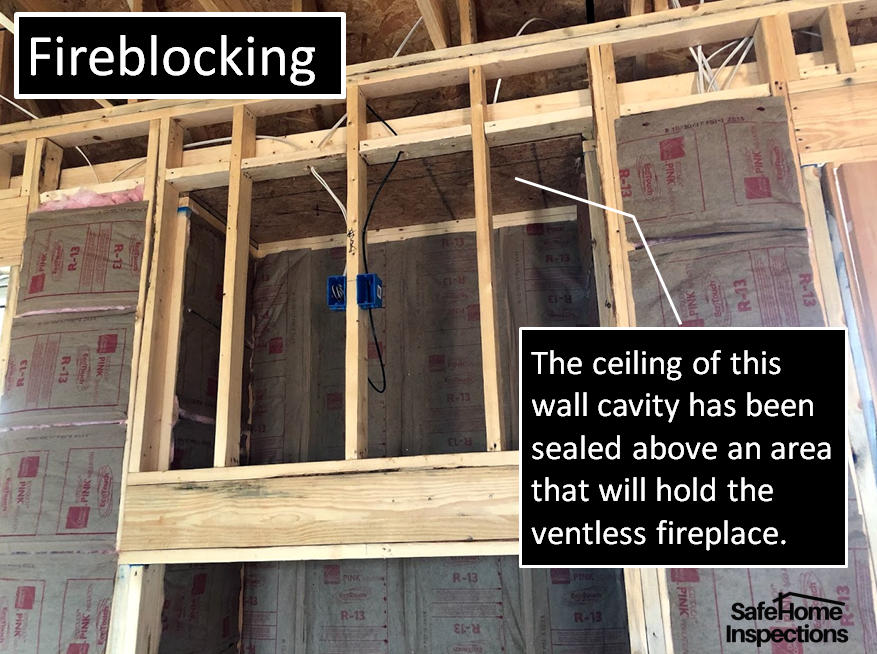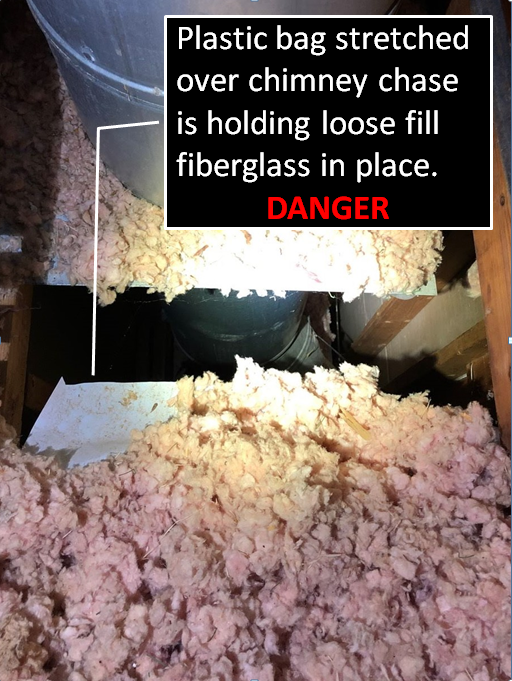
If you attempt this type inspection on your own – first and foremost…please be careful – it requires you to know and understand where you’re walking in the attic. If you live in the Jackson, Mississippi metro and need help identifying this condition – call me.
I’ve inspected plenty homes where the contractor didn’t seal the attic chimney chase during framing stage.
In combustible construction, fireblocking should be installed to cut off concealed draft openings (both vertical and horizontal) and shall form a protective barrier between floors, between a top story and a roof or attic space. A draft opening is an opening between the building envelope (interior space you heat and cool) and the unheated space. The opening allows air to pass between the two spaces.
Factory-built chimneys intended to pass through a floor or ceiling of a building shall be provided with an assembly constructed to provide firestopping at the framed joist opening and to establish and maintain required minimum clearances between chimney sections and combustible construction in this area.
International Code Council – 2015
Dangerous Condition – Fall Hazard

I’ve inspected homes where the contractor didn’t seal the chase during framing stage.
Later – the insulation installer simply stretched a plastic bag over the opening to prevent losing insulation down the open chase.
That trick will hold the insulation up for as long as the bag doesn’t sag and fall or as long as an unfortunate homeowner doesn’t step into the bag and fall down into the wall cavity. That’s a serious injury waiting to happen.

Energy Star
How-To Repair Open Chase
The photo at right is a recent attic inspection and is considered a serious fire hazard.
The dark opening you see at the ceiling line should be sealed to the fire stop collar. The collar is the square metal fastened to the pipe. It slides up and down the pipe.
To seal an area like this, securely fasten plywood (min 3/8″ thick) or drywall (min 1/2″ thick) to cover the opening.
Follow these steps:
- Clean the top of the opening
- Cut a hole in the drywall or plywood to fit the pipe – leave at least a 1″ clearance between the materials and the pipe
- Apply a bead of fire caulk or expandable foam to the top of the opening
- Set the materials around the pipe, securing the materials to the open chase with screws or nails
- Seal the metal collar down to the materials with fire rated caulk or fire rated expandable foam
- Insulate the new ceiling you create with R-30 loose fill or batt insulation
Remember: Most chimney install instructions prohibit combustible materials (including insulation) from touching the flue pipe. Various fireplace manufacturers have different specified “clearance to combustible” specifications. Generally (as with masonry fireplaces) the distance is 2 inches. Most set a clearance of 1″ from the pipe to combustible fireblocking material you’ll use to cover the hole.
Get this DO-IT-YOURSELF GUIDE TO SEALING AND INSULATING pamphlet from Energy Star and learn about sealing heating and cooling exhaust pipe, the electrical connections in your ceiling and a host of other great tips and tricks that help you save money.
Join my 9,000+ member Facebook group for homeowners and inspectors.

- - - - - - - - - - - - - - - - - - - - -